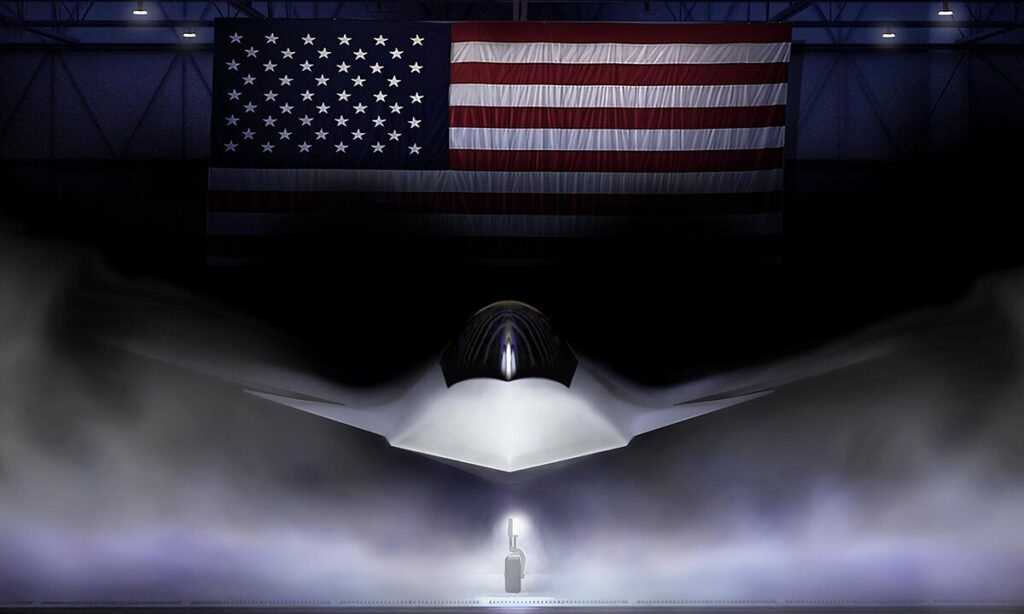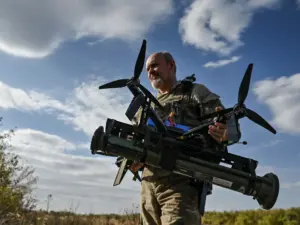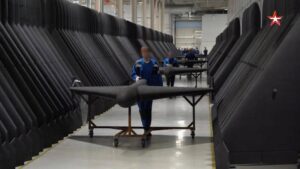The U.S. Air Force is playing a high-stakes game of hide-and-seek with the F-47, a sixth-generation fighter that’s stirring up whispers of unparalleled aerial dominance. Unveiled in a splashy Pentagon announcement earlier this year, this jet—nodding to the WWII P-47 Thunderbolt and the Air Force’s 1947 birth—promises to redefine air superiority. But here’s the kicker: rumors suggest it’s not just a gleam in some engineer’s eye. You get the sense that this bird has already taken flight, possibly even prowling restricted skies over Area 51. Frankly, if true, it’s a bold move that could shift global power dynamics, yet it raises as many questions as it answers. The thesis here is simple: the F-47’s premature emergence, if confirmed, signals a leap in military tech that could either secure America’s edge or bankrupt its future—depending on how we handle the cost and the geopolitics.
A Glimpse Behind the Curtain
Let’s start with the basics. The F-47 anchors the Air Force’s Next Generation Air Dominance (NGAD) program, a $20 billion bet on Boeing to outpace rivals like China’s J-20 or Russia’s Su-57. Officially, it’s slated to replace the F-22 Raptor, boasting a tailless delta-wing design that screams stealth and endurance. Satellite imagery from 2022, snagged by Planet Labs, allegedly caught a 65-foot-long, 50-foot-wide prototype lurking at Area 51’s South Hanger—a silhouette larger than the F-35 or F-22, hinting at a beast built for range and payload. The Pentagon’s March 2025 reveal, tied to the 47th president’s approval, confirmed its existence, but the real bombshell is the claim that prototypes have been airborne since 2020. That’s four years of secret test flights, likely over Edwards Air Force Base or Nevada’s secretive desert, before the public got a whiff.
You get the sense that the Air Force is testing more than just hardware here. This isn’t your grandpa’s fighter jet—it’s a networked hub, commanding AI-driven drones (Collaborative Combat Aircraft, or CCAs) with a 700-nautical-mile reach. The F-47’s supposed Mach 2-plus speed and adaptive engines, courtesy of General Electric or Pratt & Whitney, suggest a machine that can sprint or loiter, all while dodging radar. It’s like a chess grandmaster with a fleet of pawns, blending human piloting with machine precision. But what’s troubling is the opacity. If it’s flying now, why the silence? Is it a triumph of innovation or a gamble on untested tech?
Size, Stealth, and a Pricey Trade-Off
Size matters in fighter design, and the F-47’s footprint—outmuscling the F-35 by 13.6 feet and the F-22 by a hair—points to a jet built for long-haul missions. Its over-1,000-nautical-mile combat radius doubles the Raptor’s, ideal for deep strikes or reconnaissance in contested zones like the South China Sea. The stealth tech, with radar-scattering skin and hidden inlets, likely outclasses its predecessors, while conformal sensors offer a 360-degree battlefield view projected into the pilot’s helmet. Pair that with hypersonic missiles like the AGM-183 ARRW and potential laser weapons, and you’ve got a sci-fi arsenal. It’s as if Tom Cruise’s Maverick just got an upgrade straight out of Top Gun: Maverick.
But here’s the rub: agility might take a hit. That bigger frame could mean less nimbleness in dogfights, relying instead on beyond-visual-range kills and CCA support. The Air Force envisions 185 of these jets, yet the $300 million price tag—triple the F-35’s cost—has sparked debate. In May 2024, the NGAD program hit a pause when costs ballooned, prompting a reassessment. The Navy’s FAXX program reportedly got axed to funnel funds here, a decision that’s left carrier pilots grumbling. It’s like choosing a luxury SUV over a sports car—practical for some, but a bitter pill for those who wanted speed over bulk. The trade-off hinges on whether this jet’s network-centric approach can outsmart cheaper, nimbler foes.
The Drone Revolution: A Force Multiplier
The F-47’s real edge lies in its drone swarm. The YFQ42A, a General Atomics dogfighter, and the YFQ44A, an Anderoll multi-role beast, act as wingmen, packing missiles like the AMRAAM and JASSM. These AI-piloted craft can scout, strike, or jam, managed by the F-47 via jam-resistant data links. Picture a quarterback calling plays for a dozen receivers, dynamically shifting tactics mid-game. The cockpit debate—single pilot versus tandem—leans toward AI easing the load, though a weapons officer could shine in complex CCA missions. Having flown both setups, I’d argue the single-pilot model, with its lighter design, makes sense if the tech holds up. But if the enemy lands that first punch, as the saying goes, all bets are off.
This drone synergy echoes historical shifts, like the transition from biplanes to jets in the 1940s. Back then, radar and speed changed the game; today, it’s AI and connectivity. The F-47 could dominate electromagnetic warfare, jamming radars or deploying cyber payloads, turning the sky into a digital battlefield. Yet, reliance on drones raises risks—if the data link fails, it’s a lone wolf against a pack.
The Cost Conundrum and Geopolitical Stakes
The financial strain is real. That $3.5 billion boost in June 2025 underscores the Pentagon’s urgency, but at $55.5 billion for 185 jets, it’s a hefty chunk of the defense budget. Critics argue the stealth could be countered by future tech, like China’s quantum radar experiments. Historically, overpriced programs like the F-111 faltered under cost overruns; the F-47 risks a similar fate if production lags. The Navy’s pivot to CCAs suggests a pragmatic split—land-based F-47s with sea-launched drones—but it’s a compromise that might not satisfy all stakeholders.
Geopolitically, this jet’s early flights could spook adversaries. If it’s already testing combat roles—deep strikes or ISR missions—it’s a signal to Beijing and Moscow that America’s air edge is widening. The 2035 operational target might shrink with faster manufacturing, but that assumes Boeing delivers. Failure here could cede the skies, much like the Soviet Union’s lag in the Cold War’s later years.
A Future Forged in Secrecy
So, is the F-47 flying missions? That 2022 Area 51 photo suggests it’s at least proving its mettle, possibly as a demonstrator or CCA coordinator. Its secrecy feels like a double-edged sword—protecting innovation while fueling speculation. You get the sense that the Air Force is betting big on this jet to maintain supremacy, but the cost and complexity could backfire. If it succeeds, it’s a game-changer, blending human skill with AI dominance. If it flops, it’s a monument to overreach.
The real question is whether America can afford this gamble. The F-47 isn’t just a plane; it’s a statement—a bet on tech to outlast rivals in an era of shrinking budgets and rising threats. As it hovers in the shadows, the world watches, waiting to see if this enigma will soar or crash. One thing’s clear: the skies are about to get a lot more interesting.



